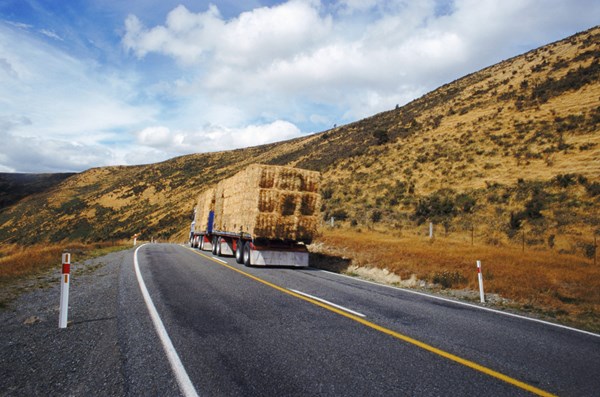 Credit: Thinkstock Try to get your hay purchased early because hay-growing conditions have not been good across the country, so your hay might come from farther away.
Credit: Thinkstock Try to get your hay purchased early because hay-growing conditions have not been good across the country, so your hay might come from farther away.Where’s your hay? If your barn’s not stocked already, we have tips from several university forage specialists to help you find quality horse hay for this winter.
Dr. Larry A. Redmon, a professor and State Forage Specialist, Texas A&M University, calls the state’s outlook “dismal.” Early rains that didn’t stop when the grass matured resulted in “a lot of hay produced early that is low in nutritive value. Some areas then went into drought.”
Redmon added, “The guy who could cut, cut quite a bit not of the best type, then didn’t get a second cutting in many instances.” Texas and California are the two top hay-producing states in the U.S.
California is in a drought situation, so what does that mean for hay production? “The good news for buyers is there is quite a bit of supply,” said Dr. Dan Putnam, University of California Extension Specialist and Forage Specialist. He said there is plenty of medium- and lower-quality alfalfa. “High-quality hay is moving effectively.” He commented that horses don’t need that highest quality “Supreme” alfalfa.
The bad news is that alfalfa’s grown on less California acreage, primarily because the dairy market is reduced. And for 2016, Putnam doesn’t see improvement, citing two reasons: “The lack of confidence in water supplies, and the steady march of orchards and vineyards.”
That the dairies are buying less alfalfa is good news for horse hay buyers. “And we’ve seen an increase in oat hay production,” said Putnam. “You can grow oat hay on very little moisture.”
Kentucky is ranked fourth in hay production in the U.S. Dr. S. Ray Smith, University of Kentucky State Forage Extension Specialist, called the outlook positive despite weather problems.
“This year in May, June andJuly, in the whole Ohio Valley of Kentucky, Ohio, Indiana and Illinois, we had way above average rain, so it was difficult to put up hay,” he said. “The earlier cut hay was this year, definitely look at it closely. It could be overly mature or rained on, reducing the quality and increasing mold.”
He noted that producers will have both good- and lower-quality hay. “In late July, August and early September, we had very good hay drying conditions.”
Planning Ahead for Quality Hay
Work with your hay grower like you do your farrier and veterinarian. “Develop a relationship with someone who produces good hay,” advised Redmon. “Ask that you need crude protein of at least 10%, then in the barn the grower will show you hay at 11%.”
He added, “The number one cause of impaction colic is low-quality hay. At the feed store, you don’t know what you’ve got. You can get good hay from a feed store if the store owner has a good relationship with the hay grower.”
Smith said,“It’s so important to line up your hay early. Don’t wait till January to call up your hay supplier to ask for a load. Many growers have it pre-committed to regular customers, so ask early rather than assume they will have good hay at that time.”


